Glamour, Gidgets, and the Girl Next Door
Also by Herbie J Pilato
The Essential Elizabeth Montgomery: A Guide to Her Magical Performances
Twitch Upon A Star: The Bewitched Life and Career of Elizabeth Montgomery
Retro Active Television: An In-Depth History of Classic TVs Social Circuitry
NBC & ME: My Life as a Page in a Book
The Bionic Book
Life StoryThe Book of Life Goes On
The Kung Fu Book of Wisdom
The Kung Fu Book of Caine
Bewitched Forever
The Bewitched Book
Glamour, Gidgets, and the Girl Next Door
Televisions Iconic Women from the 50s, 60s, and 70s
Herbie J Pilato
TAYLOR TRADE PUBLISHING
Lanham New York Boulder Toronto Plymouth, UK
Published by Taylor Trade Publishing
An imprint of Rowman & Littlefield
4501 Forbes Boulevard, Suite 200, Lanham, Maryland 20706
www.rowman.com
10 Thornbury Road, Plymouth PL6 7PP, United Kingdom
Distributed by NATIONAL BOOK NETWORK
Copyright 2014 by Herbie J Pilato
Unless otherwise noted, all photos are from the Fred Westbrook Collection.
All rights reserved. No part of this book may be reproduced in any form or by any electronic or mechanical means, including information storage and retrieval systems, without written permission from the publisher, except by a reviewer who may quote passages in a review.
British Library Cataloguing in Publication Information Available
Library of Congress Cataloging-in-Publication Data
Pilato, Herbie J.
Glamour, Gidgets, and the girl next door : televisions iconic women from the 50s, 60s, and 70s / Herbie J Pilato.
pages cm
Includes bibliographical references.
ISBN 978-1-58979-969-1 (cloth : alk. paper) ISBN 978-1-58979-970-7 (electronic) 1. Television seriesUnited StatesInterviews. 2. Television actors and actressesUnited StatesInterviews. I. Title.
PN1992.8.S4P55 2014
791.4502'8092273dc23
2014011288
 The paper used in this publication meets the minimum requirements of American National Standard for Information SciencesPermanence of Paper for Printed Library Materials, ANSI/NISO Z39.48-1992.
The paper used in this publication meets the minimum requirements of American National Standard for Information SciencesPermanence of Paper for Printed Library Materials, ANSI/NISO Z39.48-1992.
Printed in the United States of America
Dedicated to the silent inner beauty named Peace
True beauty or true glamour... it is that essence that shines from an inner lighta spirit so seductive that people turn to bathe in its warmth. The glamour comes not from artificial dangles but from a sparkling within that shines forth from where a beautiful soul lives.
Kathy Garver, Cissy, on Family Affair
Beauty and glamour are from within a person, not an evening gown, jewels or fur coat, but how one sees situations, reacts to others, being positive, a happy outlook, giving of ones self!
Donna Douglas, Elly May, on The Beverly Hillbillies
What people think is beautiful changes though the ages.
Barbara Bain, Cinnamon Carter, on Mission: Impossible
Introduction
Glamour, Gidgets, and the Girl Next Door: Televisions Iconic Women from the 50s, 60s, and 70s explores the feminine mystique of three decades of popular female stars of the small screen.
The terms glamour and girl next door speak for themselves, while the word Gidgets is the plural form reference to the Gidget franchise that has graced the big and small screens over the last five decades. The property originated with Frederick Kohners 1957 novel about the adventures of a teen named Francine Elizabeth Lawrence and her surfing friends on Malibu Beach. Francine (a.k.a. Francie), a young female, otherwise known as a girl, is small in stature, thus referencing the once-thought-affectionate (albeit now politically incorrect) term midget. Subsequently, she was affectionately known to her family and friends as the mixed moniker of Gidget.
The character became a cultural icon in the late 1950s and 60s due to three feature films starring Sandra Dee and the television series introducing future Oscar-winner Sally Field. Karen Valentine also portrayed the role in the TV-movie Gidget Grows Up , which aired in 1969, the same year she began playing novice teacher Alice Johnson in TVs first dramedy, Room 222 . Monie Ellis took over the Gidget guise in a second TV-movie, 1972s Gidget Gets Married ; and the characters last formal onscreen appearance was in the 1980s syndicated sitcom The New Gidget (featuring Caryn Richman, who bears a striking resemblance to Field), which began in 1985 with a TV-movie titled Gidgets Summer Reunion . Other than that, Francine Gidget Francie Lawrence appeared and/or was addressed in the 1980 short film Gidget Meets Hondo and in the 2010 feature documentary Accidental Icon: The Real Gidget Story .
Those profiled in the following pages have each made their unique and mainstream mark on television because their trademark characters were similar to and went beyond Gidget. In addition to Field and Valentine, other darling doll-faced actresses who presented at the very least Gidget-types include Gale Storm, who was a sitcom staple with shows like My Little Margie and Oh, Susanna (a.k.a. The Gale Storm Show ), and Patty Duke, who delivered a daffy, daring, and darling double performance as the free-spirited tomboy Patty Laneand her refined foreign twin-cousin Cathyon The Patty Duke Show .
Also acknowledged is the pristine, discerning performance of Elinor Donahue as Betty Princess Anderson, the ideal, 1950s sweet-but-direct daughter from TVs classic Father Knows Best ; the good and bad girl duel dichotomy displayed by Dawn Wells as downhome farm girl Mary Ann Summers and Tina Louise as glittery movie star Ginger Grant, both surreally marooned in the 1960s on Gilligans Island ; the delightful Donna Douglas, who with both gusto and grace played the hot and hollering Elly May Clampett, the diamond in the nouveau-riche rough on The Beverly Hillbillies ; the barrier-and-race-breaking Emmy-nominated performance of the distinguished Diahann Carroll on Julia , the first African Americanled sitcom in TV history; the smart, sassy, and sly delivery designed by Barbara Eden and her TV magic carpet ride via I Dream of Jeannie ; the svelte, slinky, and very feminine swagger of Julie Newmar as the vixen Catwoman on the original Batman series; the dynamic duo of Lindsay Wagner as The Bionic Woman and Lynda Carter as Wonder Woman ; the charismatic troika of Farrah Fawcett, Kate Jackson, and Jaclyn Smith, each of whom returned sophistication and style to television as Charlies Angels ; the Happy Hotpoint legs of Mary Tyler Moore, who in the 1950s danced in TV commercials and darted her hands around Richard Diamond, Private Eye , mere peeks into the poise shed bring to the 1960s with her unshrinking-violet performance as Laura Petriethe ideal Capri-pant-donning home engineer on The Dick Van Dyke Show and into the 1970s with The Mary Tyler Moore Show , on which she played the revolutionary Mary Richardsthe single working girl with a mind of her own.
Other legendary romantic TV female leads are chronicled in this book, each of whom are known for specific characters they portrayed; particular physical or personality traits; their beauty or intelligence; elegance or clowning; wit or wisdom; as groundbreaking lovers, sisters, cousins, coworkers, or friends. They are televisions most memorable and formidable females of a particular age-group, style, heritage, and culture; actresses, singers, dancers, performers of every ilk; each shaped, formed, polled, and pulled from TVs earliest generations and most specific genres. The list is eclectic to say the least.
With each profile, and collectively, every effort was made to chronicle the appropriate female TV icon selection with dignity and respect. The criteria for each was and remains as follows: (1) She had to be or at least become a young woman while filming or taping her particular series; she could be a mom, but not a traditional mother and never an aunt figure or curmudgeonly older neighbor type. (2) She had to appear in a lead television role from any program of any genre specifically from the 1950s, 60s or 70s. (3) She had to make her mark as a relatively romantic figure or a mature but not matronly woman, with a vibrant personality and/or a portrayal of a particularly beloved character.
Next page


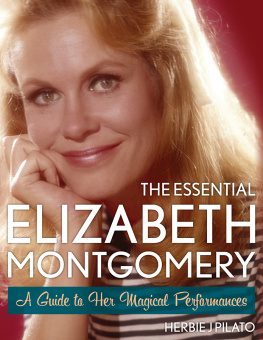
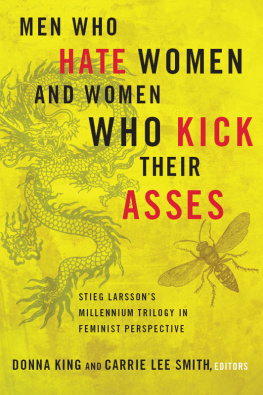
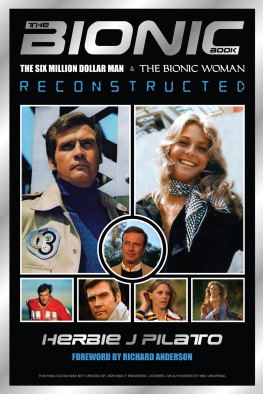

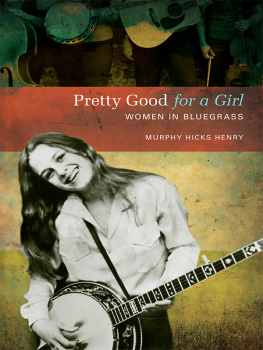
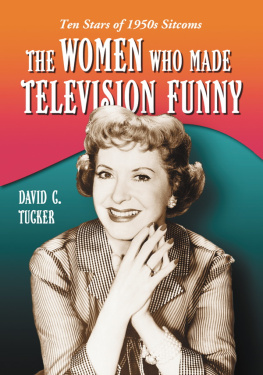
 The paper used in this publication meets the minimum requirements of American National Standard for Information SciencesPermanence of Paper for Printed Library Materials, ANSI/NISO Z39.48-1992.
The paper used in this publication meets the minimum requirements of American National Standard for Information SciencesPermanence of Paper for Printed Library Materials, ANSI/NISO Z39.48-1992.